

2019
Implementation and Policy Considerations for Experiments and at Scale April
Sarika Abbi San Francisco Office of Financial Empowerment
Mike Barnhill Alaska Department of Revenue
Jessica Bogard Alaska Division of Public Assistance
Christina Davis Alaska Division of Public Assistance
Mike Herald Western Center on Law and Poverty
Taylor Jo Isenberg Economic Security Project
Kim Johnson California Department of Social Services
Sean Kline San Francisco Office of Financial Empowerment
Nick Maduros California Tax and Fee Administration
David Matusiak California Public Utilities Commission
Phillip Merlo Stockton Historical Museum
Alex Nawar Y Combinator Research
Lori Ospina Stockton Economic Empowerment Demonstration
José Quiñones Mission Asset Fund
Elizabeth Proehl Y Combinator Research
Matthew Stangley Alaska Division of Public Assistance
Sara Race Alaska Permanent Fund Dividend Division
Antoinette Reed Conway Homes Resident Council
Elizabeth Rhodes Y Combinator Research
Tracy Ross PolicyLink
Jesse Rothstein California Policy Lab
Darryl Rutherford Reinvent South Stockton Coalition
David Teal Alaska Division ofLegislative Finance
Mayor Michael Tubbs City of Stockton
Frederick Wherry Princeton University Department of Sociology

1. 2.
3. 4.
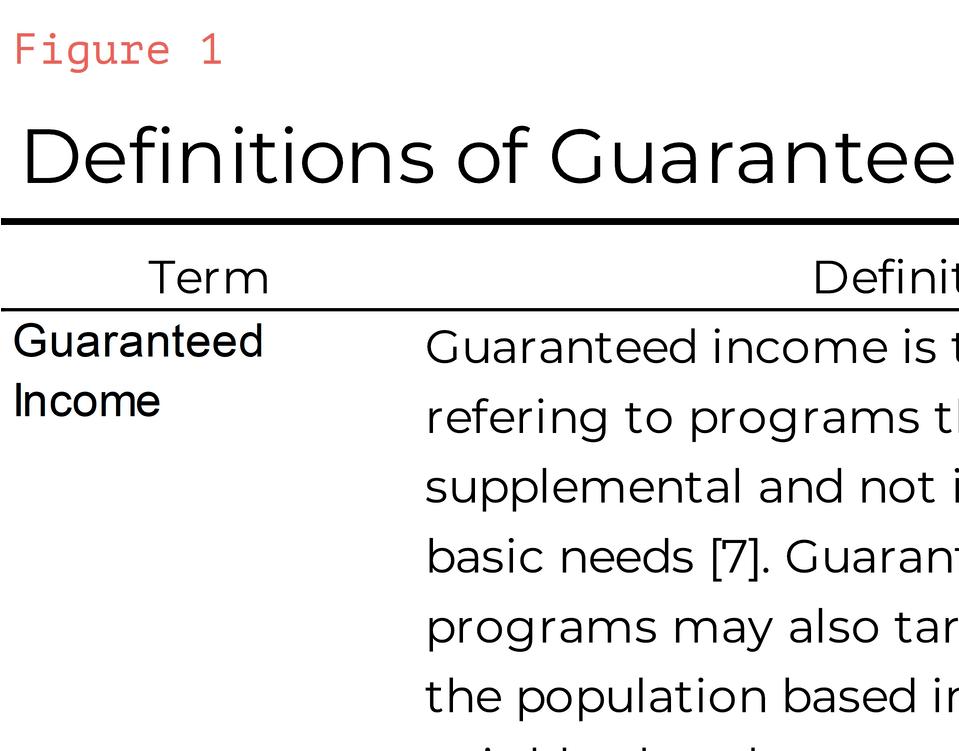
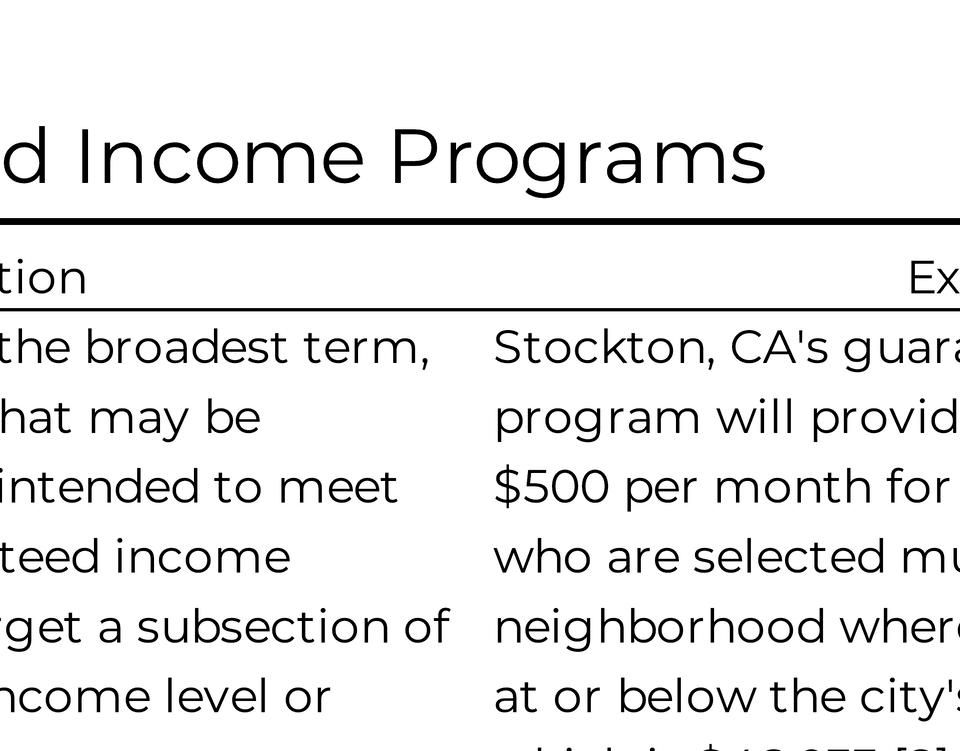




Disbursing pa y ments Recommendations
1.
Providing a mix of payment options bank deposits and prepaid cards will maximize recipient choice and financial impact
The way households receive money is critical to the success of any guaranteed income program Recipients of payments face constraints on financial access that could be worsened by a poorly designed disbursement scheme, or improved with good design
Initially, it may seem rational to try and loosen low-income households' financial constraints by encouraging them to enter the formal financial system However due to fees and penalties entering the formal banking system may prove more expensive than remaining unbanked Moreover, mechanisms like prepaid debit cards are not as simple of a solution as some practitioners argue They constrain an individual’ s spending choices, often charge fees, and do little to move households toward more sustainable financial practices.
This section summarizes existing federal and state disbursement systems examines three options (checks, prepaid debit cards, and direct deposit via banking) through the lens of customer choice and avoiding stigma, and
describes some of the higher-quality products available today The conclusion that recipients should be given a choice of using a banking account or a low-fee prepaid card to receive guaranteed income is based on these considerations
Payments at the federal and state level are primarily disbursed through direct deposits to bank accounts or on a card
Public assistance programs typically disburse funds via bank deposit, a stateissued Electronic Benefit Transfer (EBT) card or, at the federal level, a prepaid debit card known as a Direct Express card Checks are only used in special cases due to cost and theft risk Direct Express cards are a way for unbanked households to receive assistance that the federal government directly disburses such as Social Security and Supplemental Security Income and Federal Employee Workers Compensation [38]. Other federal programs, like the Supplemental
11
Nutrition Assistance Program (SNAP), are federally funded but state administered, and typically distribute the payments through EBT systems run by private contractors At the state level, most public assistance is in the form of payments to providers program assistance and other indirect costs According to the Urban Institute, only 4% of local and state expenditures take the form of cash payments [39]. A brief overview of how the states of California and Illinois disburse SNAP and cash assistance follows below
California
The most widely used mechanism for disbursing cash assistance and CalFresh, California’ s SNAP program, is the “Golden State Advantage” EBT card Recipients enrolled in multiple programs receive all benefits on a single card California’ s Employment Development Department issues a separate debit card to disburse unemployment insurance, disability insurance, and paid family leave [40]. Households can make purchases with the Golden State Advantage card without incurring fees but still face surcharge and ATM withdrawal fees The card offers four fee-free cash withdrawals per month before the contractor can charge for transactions Withdrawals exceeding this limit cost $0 80 per transaction [41]. Recipients can access their balance and transaction history through an online portal or via phone As of 2015 California also offers its own state-wide Earned Income Tax Credit (EITC) that is available to eligible households upon filing their state tax returns Like other tax refunds, this payment is available via direct deposit or check
Illinois
SNAP and cash assistance in the state of Illinois are disbursed through an Illinois Link card, an EBT card The Link card allows two ATM cash withdrawals per month before incurring a transaction fee of $1 There is also a two-transaction limit for free balance inquiries after which inquiries incur a $0 31 fee Illinois banned surcharges on Link card transactions on ATMs in Illinois, but recipients may still face
surcharge fees on out-of-state ATMs [42].
Link card balances and transaction histories can be accessed via an online portal Like California, the state of Illinois disburses all cash benefits and SNAP on the same Link card but has a separate prepaid card for unemployment insurance called the Blue KeyBank Debit Mastercard [43]. Illinois offers its own state-wide EITC that is available to eligible households upon filing their state tax returns Illinois disburses EITC funds via check or direct deposit.
Programs should disburse payments in a way that expands choice and reduces stigma
Disbursement mechanisms should expand, not constrain recipients’ choice sets In other words programs should enable participating households to use payments to fit their own financial needs on their own timelines by minimizing restrictions that could limit usage or access to certain types of financial service providers When they are the only means offered some disbursement mechanisms may create artificial barriers for households (e g checks, since they require a bank account or a check-cashing fee).
Disbursement mechanisms should also respect recipient privacy and avoid imposing stigmas associated with receiving public benefits Ensuring that recipients do not stand out when receiving or using a payment will prevent stigmatization and reinforcement of stereotypes
Practical constraints of guaranteed income programs including financial and operational limitations, may lead to the selection of disbursement mechanisms that ease the administration of programs and facilitate evaluation However, when government and non-profit organizations prioritize convenience when designing programs they often end up selecting mechanisms that even the program administrators would never use themselves Matters of cost and ease of administration notwithstanding, meeting the needs of households should be a
12
priority in designing a guaranteed income since disbursement directly affects the mission of providing financial agency to program participants
Physical checks are the most restrictive disbursement option They force unbanked recipients to interact with the checkcashing industry, eroding the value of guaranteed income payments, and are vulnerable to theft because they are recognizable in the mail
Check payments also come with significant administrative costs, making them inefficient for program administrators and participating households For example, the Alaska Department of Public Assistance reports that cutting checks for the Permanent Fund Dividend an annual unconditional cash payment costs $15 for each mailed warrant or check Electronic reloading of EBT cards may be cheaper, though each refill carries a $0 50 fee [44].
Prepaid cards are a simple, popular disbursement mechanism Figure 2 shows the sources from which households receive prepaid cards These cards are common and, while they can be purchased by consumers are often used to distribute some sort of payment or benefits They are easy to use and accepted by most, but not all, retailers They are often reloadable, allowing households to integrate them into their regular financial transactions, and can be reloaded with deposits from a bank account cash at a retailer or by a third party via an online platform
Prepaid cards do typically come with fees They can charge fees for a variety of simple banking activities, from reloading the cards to monthly maintenance fees to fees for purchases According to the Federal Deposit Insurance Corporation prepaid cards cost unbanked consumers an average of $300 a year in fees [45]. Cards that have a free deposit service still charge an average of $180 per consumer in fees, mostly from monthly or transaction fees.
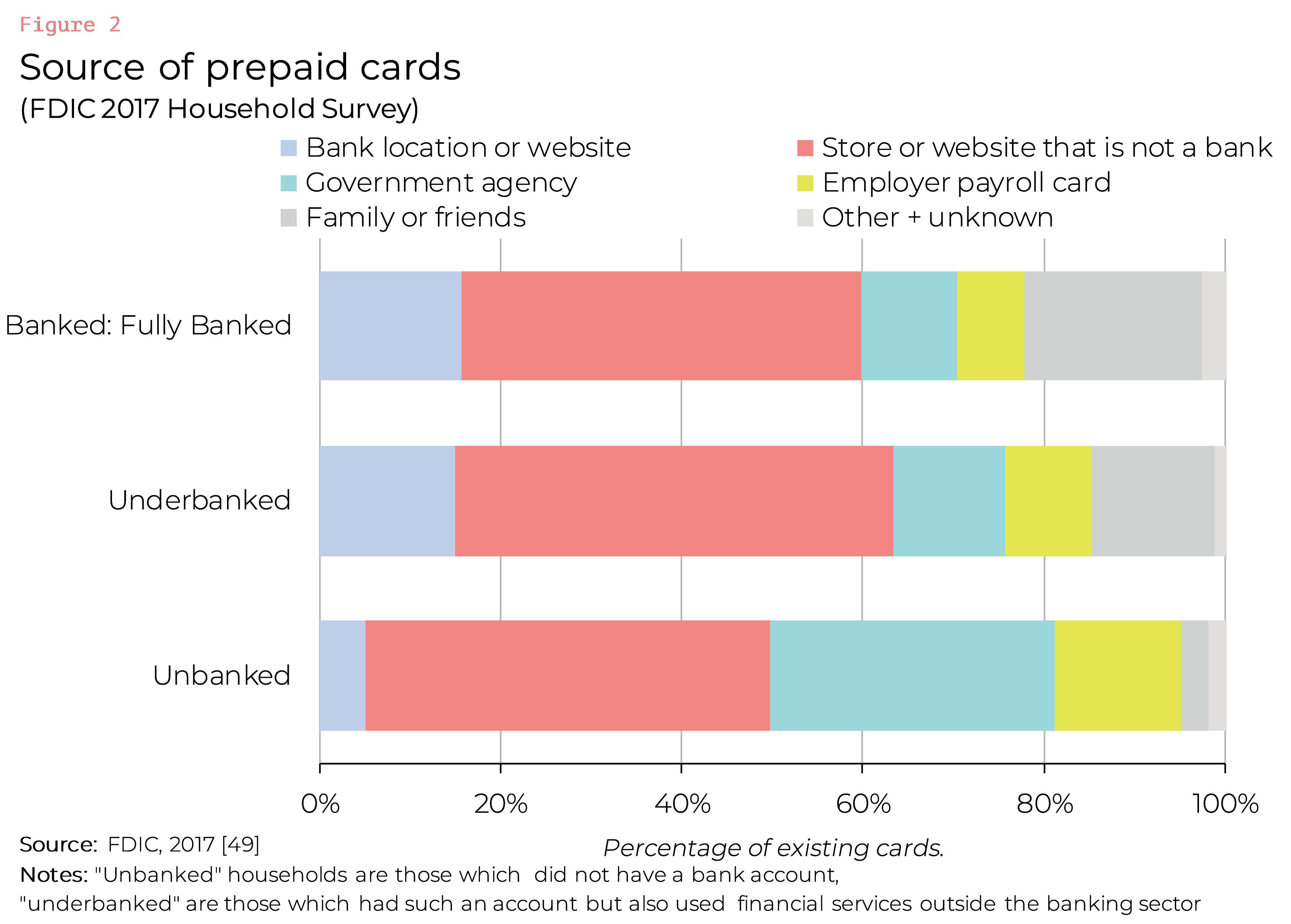
13
Checks
Prepaid cards
Figure 2
Prepaid cards also limit recipients' discretion over how to use funds because they cannot be used for some major expenditures including rent or for building credit [46].
There are some low-fee prepaid cards but pitfalls remain Households that can only use their prepaid cards to access their guaranteed income may still face fees associated with other products they use to manage their money, including EBT cards or additional prepaid cards Encouraging households to open zero-fee bank accounts can address this concern Households may also be burdened by the complexity of using yet another financial product Disbursing guaranteed income on a card like the GreenDot card that allows for the transfer of other public benefits or financial resources could allow households to simplify their financial lives In any event, recipients of prepaid cards will face surcharge fees from ATMs since no issuer covers third party fees
If prepaid cards are used as a disbursement mechanism their physical appearance should not differ from traditional debit card options available from major banks Some states use the same, distinctive image for all EBT cards, making them easy to recognize An example, used to distribute EBT benefits by the State of California is shown below This kind of design should be avoided The Link card used by the state of Illinois, is a prime example of a less recognizable card Its design favors that of cards issued by private banks The card used by the State of California is shown below.

Another way to avoid stigmatization is to use existing community infrastructure to disperse benefits An example comes from the Disconsa financial services partnership in Mexico It distributes governmentfunded goods and benefits, including a conditional cash transfer to a network of privately-run community stores The network is an efficient way to allow government services to reach remote areas [47]. It also makes it easy for recipients to access benefits without having to go to an identifiable distribution center like a government office There are equivalent networks of community-based infrastructure in the United States like the U S postal service
Prepaid cards are generally easy to administer because they are easy to distribute and they can be reloaded online without an Automated Clearinghouse (ACH) network Banks use this network, as do popular cash applications such as Venmo and Zelle, to transfer funds from paying institutions to individual bank accounts. By contrast, small-scale pilots can reload prepaid cards directly through an online platform
Encouraging households to enter the formal banking system can help them avoid predatory services and expand financial choice Banked households have more options for how to spend payments and are less likely to pay transaction fees than unbanked households
Many low-income households do not have access to standard banking options, which complicates this mechanism Figures 3 and 4 show the portion of underbanked households by county in California and Illinois Figure 5 provides a national picture of underbanked households Banking options available to these households may come with a host of restrictions including limited deposit and bill pay capabilities maintenance fees, excessive overdraft fees, inactivity fees, ATM fees, and limited branch access [48].
[ here
14
Direct deposit via the banking system
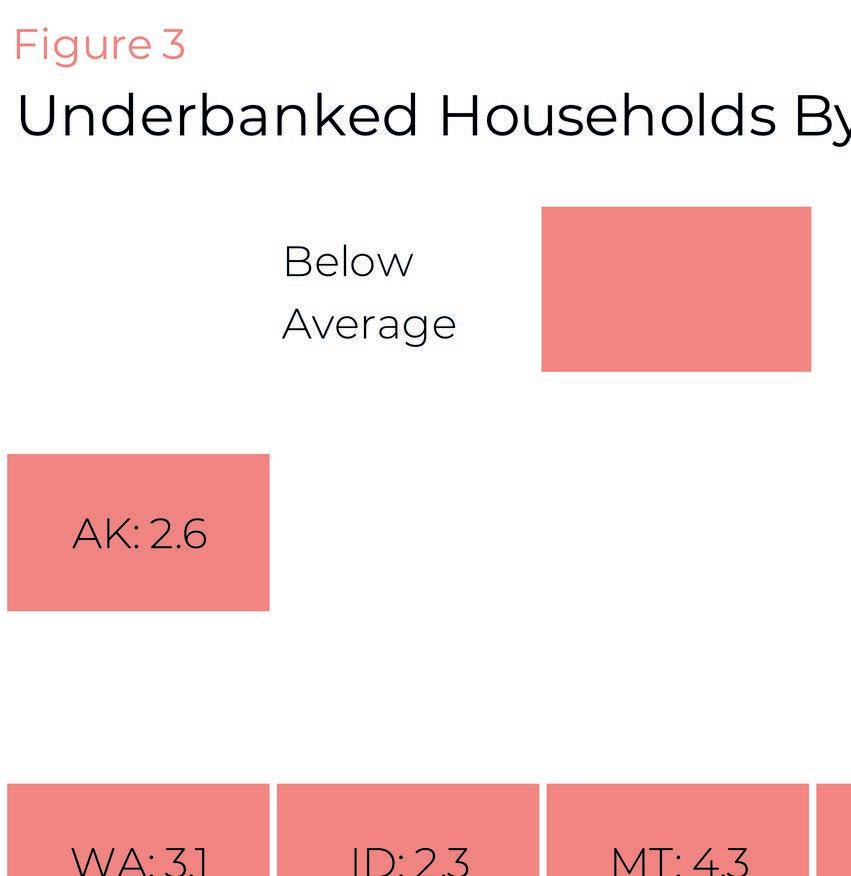
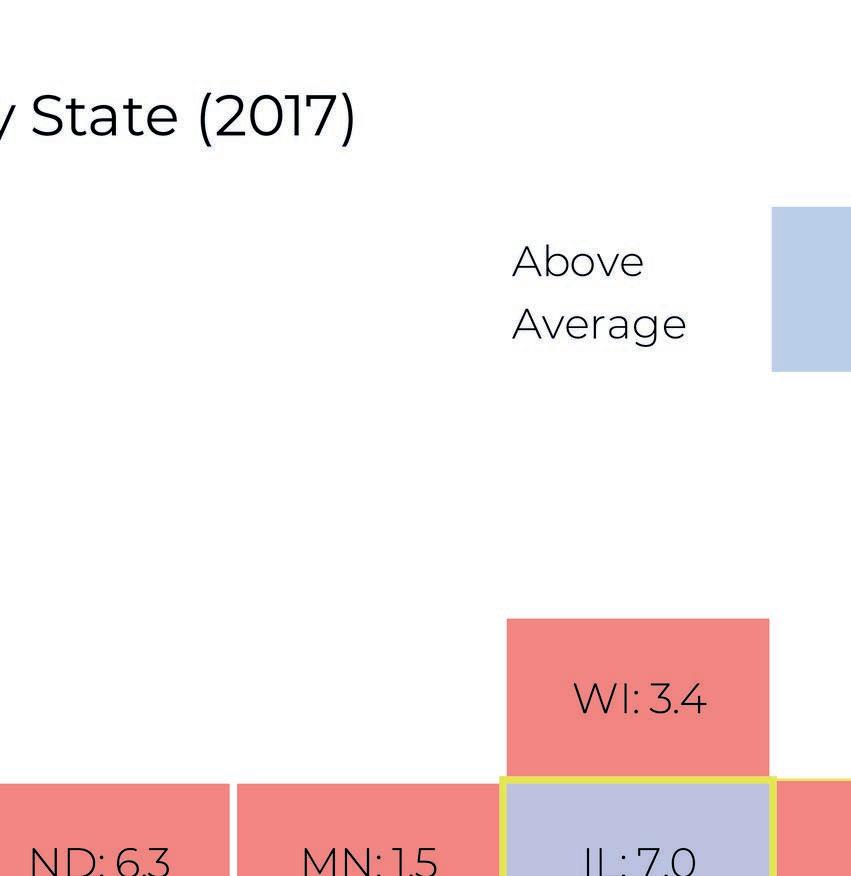
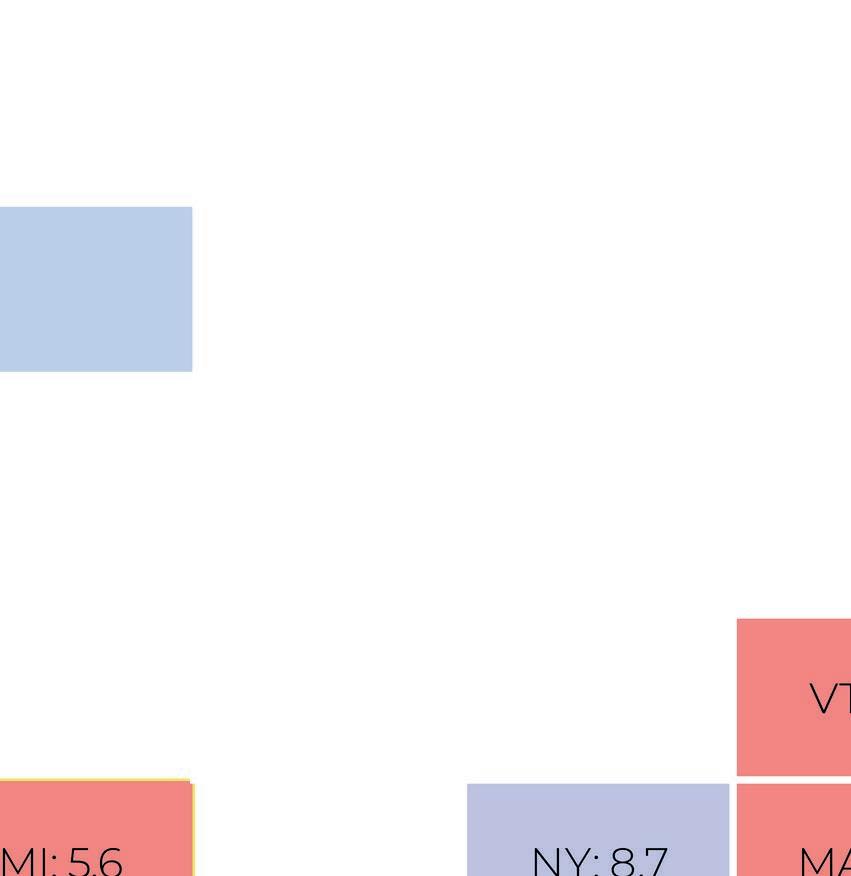






16
Figure 4
Figure 5
Examples of high-quality products
Prepaid cards
The best prepaid card options have four key features:
1. They minimize transaction fees, reloading fees, monthly fees, and ATM fees
2. They allow for a savings pocket or rainy-day fund, which lets users reserve a portion of payments in a separate fund like a savings account, to ease financial planning
3. They are available within an open banking system Open banking standards require that institutions offer transparent information about fees and services
4. They require that customer financial data be easily shared between institutions This allows for households to more easily transfer funds between banks and services [51].
A prepaid card that meets all of the above criteria does not yet exist Program designers will either need to request one from an issuer or wait for an issuer to offer this set of terms. Such a program would still face a sustainability challenge: If the prepaid card option is financed philanthropically rather than with a sound business model or steady source of government revenue, the program risks changes to the card’ s fee structure or losing the card all together.
Figure 6 (see p 19) lists high-road online banking options that reduce risk for recipients and, in some cases, encourage savings Cities for Financial Empowerment has developed a set of national bank account standards that are also a useful resource [52].
A limitation of most of these services, like Chime, is that they do not allow noncitizens to open accounts Motiv Bank however offers accounts to
individuals with a variety of U S and foreign identification cards
Mobile applications are an important addon feature
Mobile phones are a growing means of accessing internet services in low income communities and mobile capability through apps and mobile-friendly sites can be a means to expand access to quality financial services This is especially true given the scarcity of bank branches and no-fee ATMs in low income communities [53]. Thirty percent of households with incomes under $25 000 per year have home internet access exclusively via mobile (the largest share of any income group)[54].
For this reason, guaranteed income programs should have an optional mobile service even though many households still do not have access to smartphones
It is imperative for programs to offer prepaid cards or bank accounts with a financial institution that is sophisticated enough to adequately protect customers from cybercrime Online banks are one option Alternatively, programs could consider prepaid cards with a mobileaccessible interface However, person-toperson (P2P) applications, like the Cash App, or systems that require a mobile device to make payments are not sufficiently secure and limit where the guaranteed income can be used
The best solution is to offer participants a mix of options
The Stockton demonstration opted for prepaid cards in the interest of uniformity, so all participants would have the same experience with the program It is possible, though, to offer both ACH deposits encouraging banking and prepaid cards without sacrificing the capacity for clean evaluation With a large enough sample size, a mix of disbursement options will still allow statistically useful results If the primary objective of evaluation is not obtaining evidence from a well controlled experiment, offering multiple disbursement mechanisms should not
17
High-road banking
impair evaluation no matter the size of the program
A mix of options can increase the economic impact of a program in recipients’ lives Households that cannot access banking will still be able to participate by using prepaid cards Households that are already banked will not experience any disruption Finally, households that take this opportunity to become banked will
increase their access to better and more sustainable financial services Conversely, uniformity restricts recipient choice, limiting the ability of programs to help households meet their full financial needs
Allowing households to select their preferred disbursement method can provide richer information about the recipient preferences and existing constraints on saving, transferring, or spending money within a community
Guaranteed income can help households build credit and facilitate economic mobility
Guaranteed income has clear utility to households as a means of mitigating volatile consumption streams, yet advocates hope that giving cash will have economic benefits beyond paying for existing needs Can cash allow families to build credit and make high-risk high-return investments like starting a business?
Building Credit
Guaranteed income can help households build or restore their credit if the payment is sufficiently large and timely enough to cover bills But bill paying does not guarantee the building or restoration of credit for households, since on-time rent and utility payments are not typically reported to credit bureaus Households seeking to build their credit may need to use rent reporting services to report on-time payments to credit bureaus These services, such as Rent Reporters and Rental Kharma, typically come with fees [55].
Some non-profits and banks report responsible financial behavior to credit bureaus For example, the Mission Asset Fund facilitates credit-building among participants by reporting monthly saving contributions as loan payments to a credit bureau [56]. Similarly, Motiv online banking offers a savings plan that helps customers build credit Customers set a savings goal which is then turned into a secured loan by the bank Regular payments to meet the savings goal are then credited as loan repayment and reported to the credit bureaus [57]. Guaranteed income programs that allow program administrators to report good financial behavior to credit bureaus could, therefore, help recipients boost credit
Supporting Entrepreneurship
Guaranteed income can spur entrepreneurship by providing households with enough income (or expanded credit) to take financial risks Such investments are likely to be made only after households have been able to meet their basic needs and still have resources left over to start a business
18
Facilitating Economic Mobility

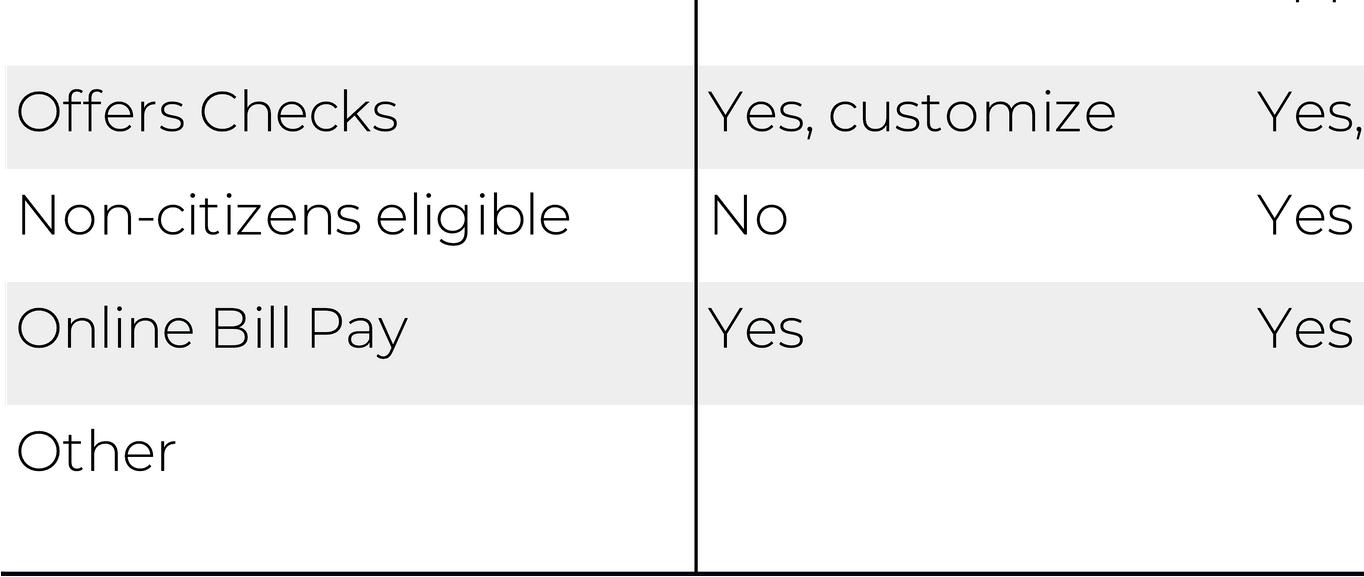
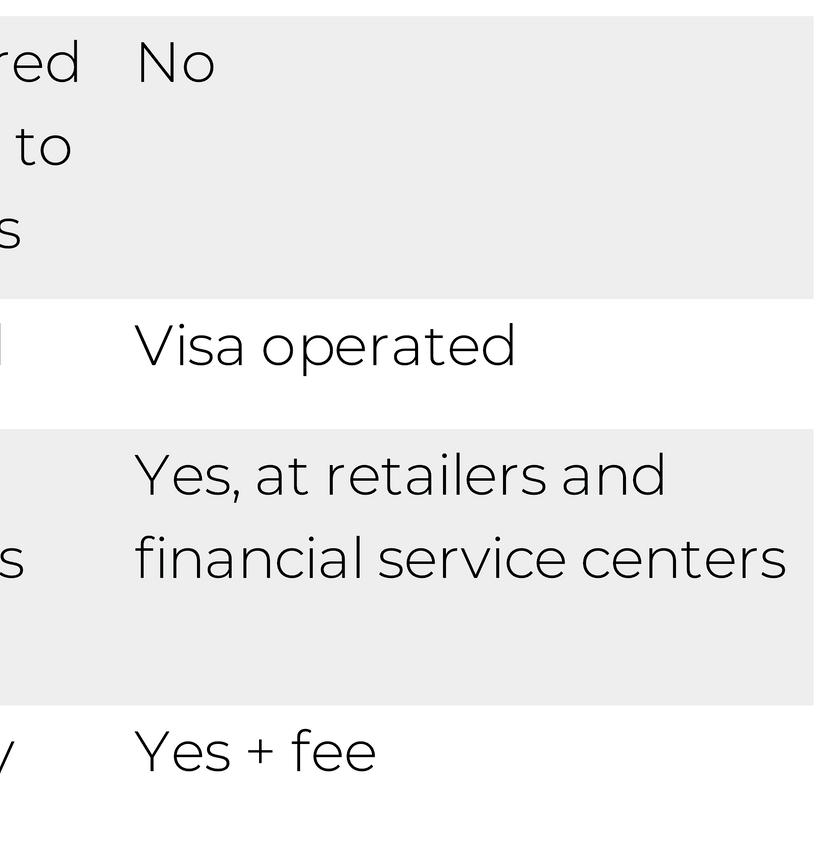
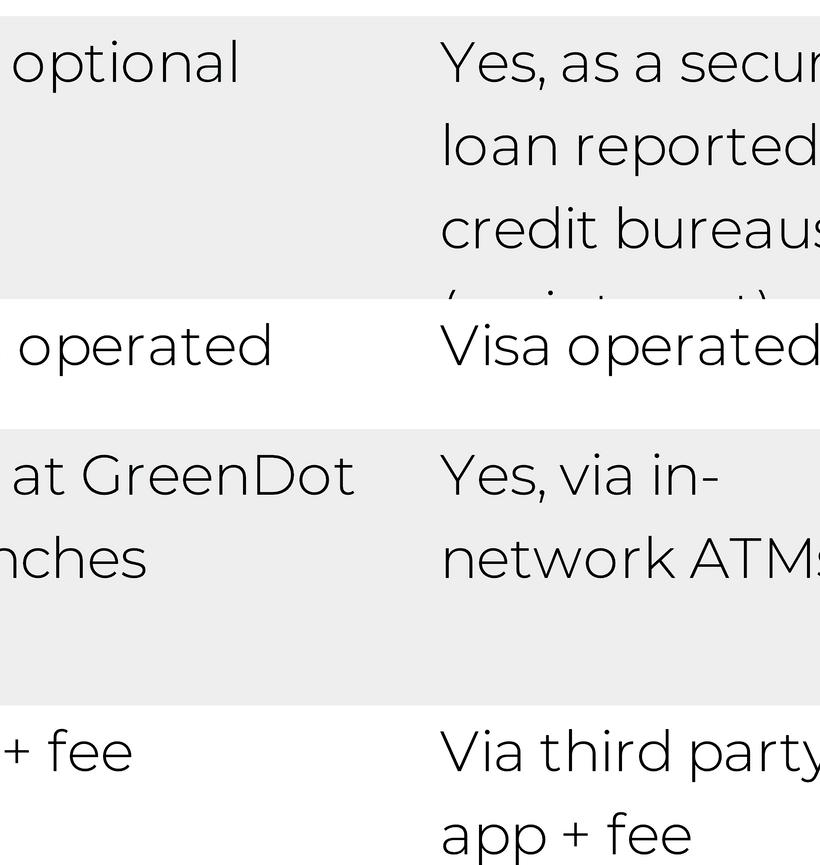
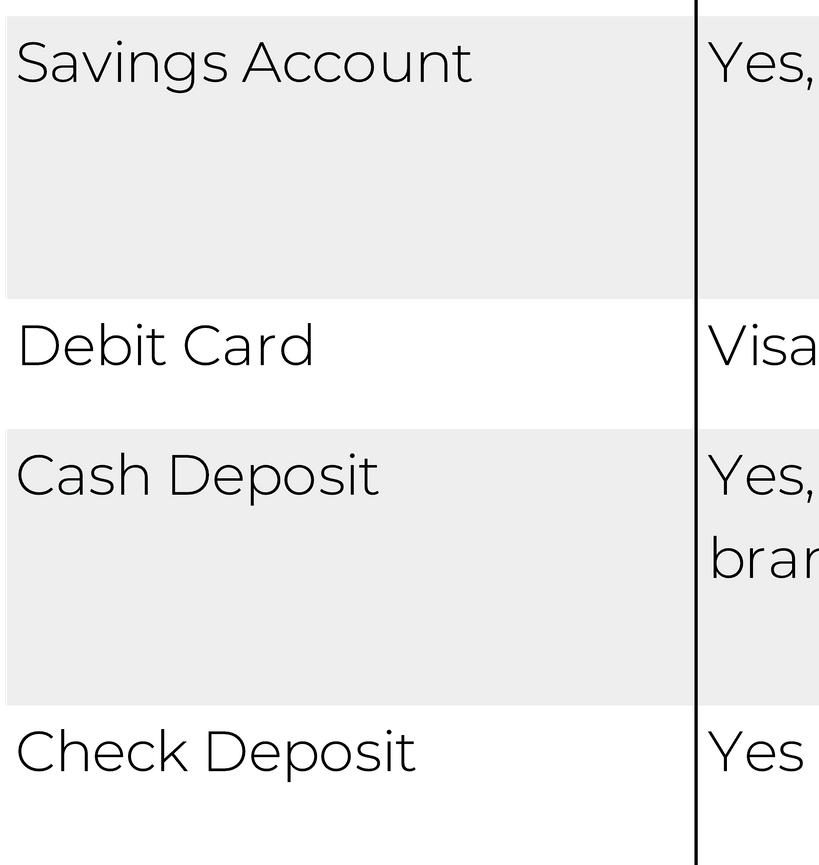

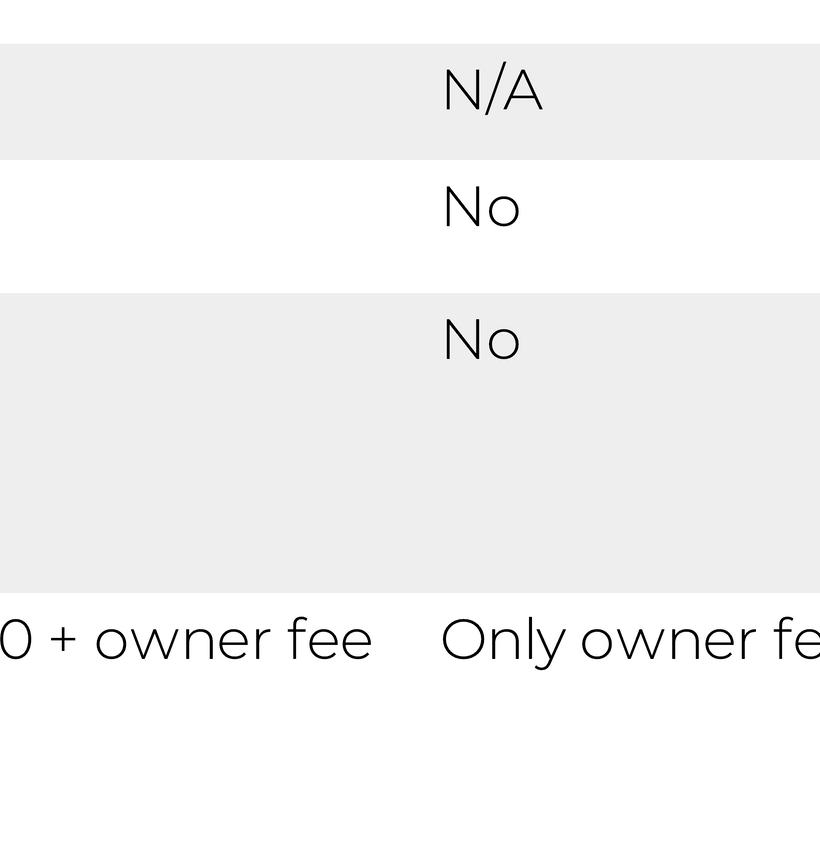

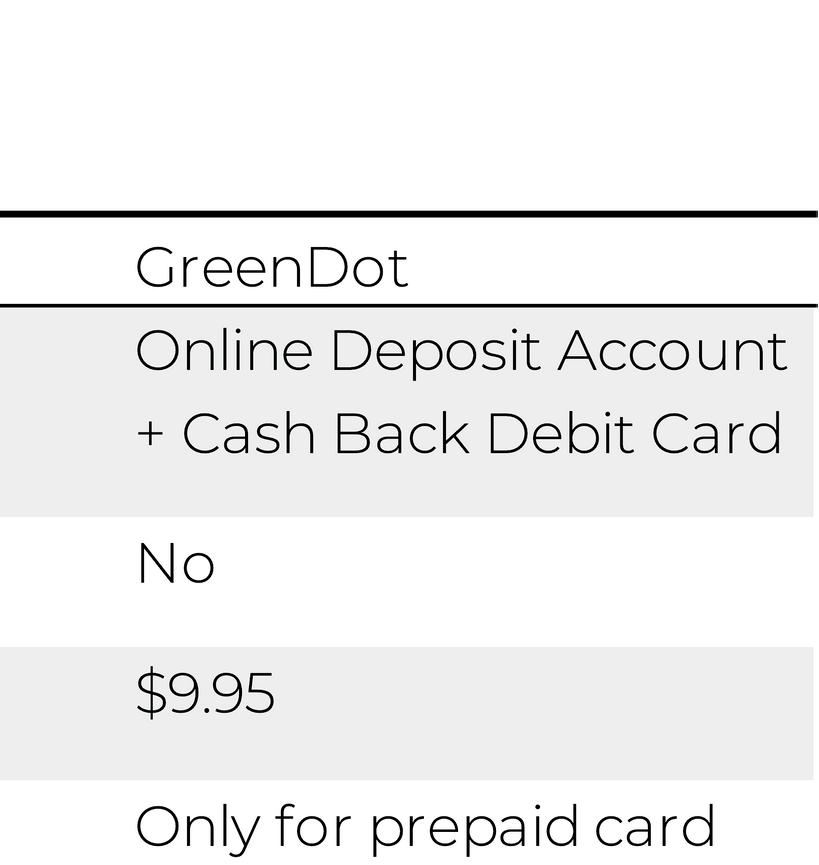


Pa y ment Frequenc y
Recommendations
Monthly payments maximize a guaranteed income program ’ s effects on financial stability
Weekly payments are useful for experimentation but have potential downsides
The frequency of payments is another critical determinant of the success of a guaranteed income program Households are likely to use payments for different expenses depending on how often they receive them For example, large, annual payments are more likely to be used for major expenses like hospital stays or car repair whereas monthly payments are more likely to be used for recurring bills Weekly payments are often used in cash transfer programs internationally but are not common in the U S
This section examines the frequency of payments in existing federal and state benefit programs and how often workers get paid, then analyzes three options: annual payments, monthly payments, and weekly payments
Guaranteed income programs should opt for monthly payments if their primary goal is assisting households with their most salient needs Payments disbursed in time
to cover rent and bills have the benefit of being large enough to make a meaningful dent in immediate expenses Unlike annual payments, monthly payments are received before late fees on bills are incurred, limiting expenses (like late fees) that arise from income volatility While the efficacy of weekly payments remains unknown, pilots that experiment with weekly payments could add to the body of research on cash payments
Payment frequency varies in federal and state programs.
At the federal and state level public benefits are typically distributed either in lump sums at critical points in the year or as monthly payments
The largest annual payment to low-income households is the EITC. Since it is issued after a household files a tax return for the previous calendar year, it is disbursed the year after a household qualifies Similarly,
20
1. 2.
the Permanent Fund Dividend in the State of Alaska is an annual lump sum distributed at the end of the qualifying year, typically between October and December. California and Illinois both administer statewide EITCs which are paid when households file state tax returns for their qualifying year
A 2015 study conducted in Chicago by the Center for Economic Progress allowed EITC recipients to receive their payments quarterly rather than annually [60]. The study found that recipients preferred the quarterly payments The IRS did offer an Advanced Earned Income Tax Credit which paid recipients a portion of their EITC through their bi-weekly paychecks, but the program was discontinued due to low uptake (approximately 3%). However the lack of interest is often attributed to the small amount of the advanced payment up to $35 a week and the complexity of the enrollment process [61].
Most other federal and state social assistance programs are distributed monthly This includes programs such as the federally-administered Supplemental Security Income (SSI) program, the federally-funded, state-administered SNAP program, and cash assistance through the Temporary Assistance for Needy Families (TANF) program However many states issue unemployment insurance weekly or bi-weekly These payments can be issued via direct deposit or through a state-issued debit card
Most low income households receive transfers twice a month.
Most U S states have a legal requirement for the minimum frequency for paying workers, which varies slightly by state States require payments of either twice a month or every other week [62]. Both California and Illinois require employers to pay wages at least twice per month
However, there are some exceptions For example, Michigan s rules vary by occupation while Arizona requires payments to be issued on two or more days a month with no more than sixteen
days between each issuance
For this reason, guaranteed income programs that issue payments monthly de facto diversify the timing of income for working households. These monthly payments can act as a safety valve providing financial relief and certainty when bills come due at the end of each month or unexpected costs arise
Programs should select a payment frequency that prioritizes recipient effects.
There are benefits and drawbacks to annual, monthly, and weekly payments Key factors in choosing among them include the effects on income volatility, cognitive impact and administrative costs
Annual lump sums
Large, annual payments are useful to households who are typically too resourceconstrained to save throughout the year or make large expenditures More frequent payments are likely to be spent immediately on urgent needs limiting potential for savings or covering large costs EITC recipients mostly spend their funds to catch up on debt, purchase or repair cars, or buy other durable goods [63]. While annual payments also serve as a safety valve or rainy-day fund few households will use their refunds to build their savings [64].
Moreover, annual payments are only a stopgap measure for the financial concerns facing low-income households. A Columbia University study that gave annual cash supplements to new mothers found that recipients spent a large portion of the funds catching up on overdue bills [65]. Holding off cash assistance until the end of the year means families will accrue fees and damage their credit on a monthly basis A discussion with members of the Conway Homes Resident Council in Stockton confirmed this impression [66].
Annual payments like the EITC and the Alaska Permanent Dividend are administratively efficient. The Alaska
21
Permanent Fund Division’ s end-of-year payment allows the division to process applications and verify recipient residency with a relatively low administrative burden [67]. The fund incurred $8 2 million in overhead costs in 2017, which was about 1% of the total program cost [68]. Likewise EITC payments benefit from integration within the tax filing process
Monthly payments
A monthly frequency is the most intuitive from a household decision-making perspective Most rent bills and other major expenses are paid monthly In 2016 housing costs were the single largest cost in a household budget, making up 41% of average expenditures for households in the bottom 20% of the income distribution [69]. The rent burden on low- and moderate-income households also limits other opportunities for financial empowerment, including debt management and continued education [70]. If the primary goal of a guaranteed income program is to increase financial stability, monthly payments appear to be the best way to achieve this goal
Recipients' subjective perception of the total value of payments will also depend on the size of each transfer [71]. This is a manifestation of mental accounting, a behavioral economics term for the way consumers interpret material gains and losses Monthly transfers may seem like a larger boost to one s income than four weekly transfers even though both payments are the same amount because they are perceived as a larger gain to households than the smaller weekly payments Larger gains are more likely to be thought of as a windfall or a savings and used to cover expenses that increase financial stability like debt or catching up on rent
From an administrative cost standpoint the frequency of payment is highly dependent on the disbursement mechanism and the fees associated with it If the disbursement mechanism requires a fee for every transfer to a bank account or reloading of a card, monthly payments are
preferable to weekly payments as the former option will be more cost effective This also means annual payments are less expensive than monthly payments
However, as noted above, annual payments do not come frequently enough to prevent households from incurring late fees and hurting their credit
Weekly payments
A weekly payment could address periodic needs that are not related to major fixed expenses (like groceries). However, weekly transfers may run into the opposite issue as annual lump sums they accumulate too slowly to help households meet large debts or expenses
One example of this phenomenon is the flexible-pay benefit It is a service offered by a payroll provider that allows employees to draw down their pay for work they have completed rather than waiting for their regular paycheck to arrive While this option allows households to address small daily and weekly needs, it provides little room for them to cover larger expenses because the weekly payments are often spent the moment they become available [72]. Monthly payments, by contrast, are likely to serve as a short-term savings plan for households that helps them meet these expenses
Assuming the administrative costs are not substantially different from monthly payments, guaranteed income pilots may want to experiment with weekly payments Weekly payments may be less likely to be cashed out and remain untracked because they are unlikely to be used for large expenditures such as rent or car payments If this is the case, weekly payments could provide more detailed evaluative insights than monthly payments
22
pa y ment amount
Recommendations
Consider whether the amount will help households advance up a “financial hierarchy of needs.”
Set the amount based on regionally adjusted costs to cover basic expenses
Set the amount to 41% of living wage - equivalent to average rent – if full coverage is financially impossible
The ability of a guaranteed income program to meet its intended goals will depend on payment size Different payment amounts are necessary depending on a program's goals This section outlines how to set benefit amounts that allow participants to meet basic needs and to improve social and economic mobility
Financial hierarchy of needs
Guaranteed income programs must ensure payments are sufficient to empower recipient households to meet program goals The Mission Asset Fund, a Californiabased nonprofit, has created a model to explain what individuals require to reach their full economic potential called the Financial Hierarchy of Needs Based on the psychological hierarchy of needs
developed by psychologist Abraham Maslow, the financial hierarchy of needs describes 5 levels of financial behavior that build upon each other Economic mobility may require individuals to reach higher levels which implies that satisfaction of certain (lower) levels of financial need be met before social and economic mobility is possible
The first level, income, refers to a household’ s ability to meet basic living expenses such as food housing and utilities Once basic needs are met, households can start insuring against unforeseen events that can cause setbacks, including loss, theft, damage and illness Next, they need credit to smooth consumption or invest in acquiring assets such as a car home or education At the
23
1. 2. 3.
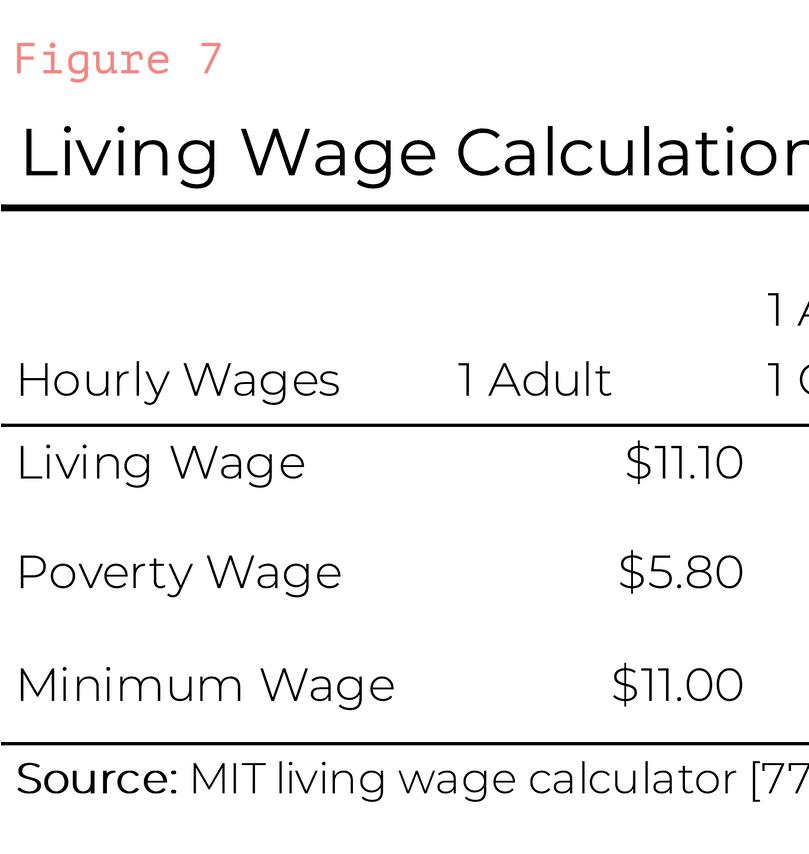
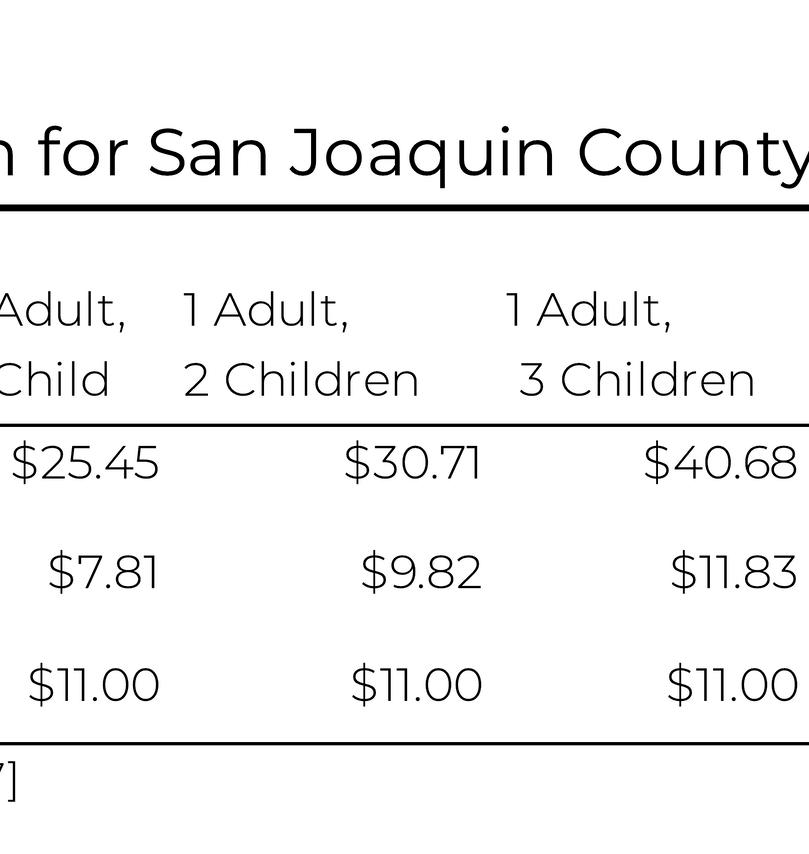

consumption expenditures on housing [78]. In Stockton, this means a single adult earning a living wage would spend $788 per month on housing According to the U S Department of Housing and Urban Development, the regionally adjusted fair market rent for a one-bedroom apartment in San Joaquin County CA is $746 in 2018 which is nearly equal to the 41 percent national average [79].
At a minimum, guaranteed income should be enough to cover regionally adjusted rent According to the 2017 Consumer Expenditure Survey the average household spends 10 5% of their income on food, both inside and outside the home [78]. To cover the costs of housing and food, guaranteed income payments would need to be 51 5% of the regionally adjusted cost of living In Stockton this would equal $981 per month for a single adult
A final consideration for calibrating the size of the guaranteed income payment is whether it would be taxable Distributions made through a nonprofit organization can be considered gifts that would not count as taxable income Most public benefits are also nontaxable, especially in-kind transfers such as SNAP and Section 8 However, cash benefits such as Social Security can be subject to federal income taxes. Depending on income level and family structure Social Security recipients can be required to pay federal income taxes on up to 85% of their benefits [80]. However, Supplemental Security Income (SSI) payments, which are also cash payments, are nontaxable [81].
Income taxes
Whether or not guaranteed income payments are subject to income taxes would depend on specifics of the program, legal landscape, and state of residence
Some states have more regressive tax systems than others which would have significant consequences for a guaranteed income payment if it was taxable For example, Illinois has the 8th most regressive tax system in the country, while California has the most progressive [82].
Further detail is provided in the financing section It may be possible to exempt guaranteed income payments from state income tax via legislation
25
interaction w ith e x isting benefit programs
Recommendations
Guaranteed income should supplement, not replace, the current social safety net
Permanent programs should be accompanied by legislative changes that exempt guaranteed income payments from benefit eligibility calculations and income taxes.
3.
Create a ‘hold harmless’ program to offset benefit losses that cannot be otherwise prevented
4. Ensure participants have accurate information on how receiving a guaranteed income payment will affect their eligibility for other programs through benefit counseling or partnerships with community organizations.
Short-term pilots should directly request that government agencies provide waivers exempting guaranteed income payments when determining benefit eligibility.
Receipt of a guaranteed income may affect households’ eligibility for a wide array of social safety net programs Depending on financial circumstances, the amount of the guaranteed income payment, and statespecific eligibility criteria households may experience different effects upon receipt
of a guaranteed income cash payment It is possible for a household to become worse off if the receipt of payments makes the household ineligible for other benefits The benefit of payments can also be partly offset by a reduction in benefits Consider a family of 3 with no income and $505 in
26
5.
2.
1.
monthly SNAP benefits that receives a guaranteed income payment of $500 per month Their SNAP benefits would be reduced by 30% of the increase in income ($150), so the net gain from the payment would be only $350 [83]. This effect could be even larger for individuals whose earnings are just below certain benefit cliffs and who exceed eligibility limits due to payments
How a guaranteed income should interact with public benefits depends on the goals of the program There are two main paradigms for how a guaranteed income program should interact with existing benefits
Libertarians, such as Charles Murray, and some conservatives see guaranteed income as a replacement for existing benefits such as SNAP and the Special Supplemental Nutrition Program for Women, Infants and Children (WIC) [84]. They argue that moving benefits to a single cash payment with limited eligibility criteria will reduce bureaucracy and administrative costs of more targeted programs that have varying eligibility requirements and offer households more control over how to spend their benefit money
Progressive advocates assert that guaranteed income should supplement the existing safety net In this view the purpose of providing a guaranteed income is to boost income from current levels, and any loss or reduction of benefits would be contrary to this goal
Guaranteed income pilots and programs should consider the benefits as a supplement to the current social safety net rather than a replacement, to avoid making recipients worse off than before the guaranteed income was implemented
Guaranteed income payments risk offsetting benefits from social safety net programs including :
Food SNAP
SpecialSupplementalNutritionProgram
forWomen InfantsandChildren (WIC)
Freeandreducedpriceschoolmeals
Housing
Section8subsidies (housingchoice vouchersandproject-basedsubsidies)
PublicHousing
Healthcare Medicaid Children’sHealthInsuranceProgram (CHIP)
Taxcredits
EarnedIncomeTaxCredit (EITC)
ChildTaxCredit (CTC)
Otherassistanceforfamilieswithchildren, theelderly, andpeoplewithdisabilities
SupplementalSecurityIncome (SSI)
TemporaryAssistanceforNeedyFamilies (TANF)
Childcaresubsidies
Request Waivers and Legislative Exemptions
Waivers
We recommend pilot programs request waivers from the state or federal agencies that administer existing benefit programs so that guaranteed income payments will not count towards eligibility limits Requesting waivers is usually a lengthy and difficult process Even when a bureaucracy has the ability and will to grant a waiver, the decision ultimately rests in the hands of the agency's leadership which may result in political barriers as well
27
Legislative Exemptions
For permanent programs implemented at the state or city level, state legislation could exempt guaranteed income payments from benefit eligibility calculations However, state legislation may be unable to exclude payments from federal benefit eligibility calculations – it is unclear if such laws would hold up in court Under current federal law, cash payments such as Social Security and Supplemental Security Income (SSI) do count as income for the purposes of eligibility for other public assistance programs like SNAP and Section 8 whereas in-kind benefits do not [85].
Options for Mitigating Negative Impact for Recipients
Besides excluding payments from benefit eligibility calculations the next best strategy is mitigating negative effects from benefit loss There are multiple options to accomplish this, though none are comprehensive or address all possible concerns
Provide Benefits Counseling
The Stockton demonstration opted to provide individualized financial counseling to each participant in the pilot project who receives public assistance and may be at risk of losing benefits This is an ideal approach and can help recipients understand the potential consequences of program participation
Research suggests that low-income households often do not change their behavior to maximize benefits, possibly because they are unaware of how their income affects their benefit eligibility [86]. If this is true, it is likely that households may also be unaware of how other forms of income, such as guaranteed income payments, might affect their eligibility for existing programs
Personalized benefit counseling can ensure recipients understand how guaranteed income payments would impact existing benefits At a minimum, counseling should prevent households from being made worse off after receiving a guaranteed
income Benefit counseling can be complicated and costly Providing financial counseling requires having access to experts who can accurately assess the impact that additional income would have for any given individual situation Many benefit recipients are enrolled in multiple programs or have members of their household who receive benefits and may be impacted as well Many low-income households also have volatile incomes that change drastically from month to month, further complicating benefit eligibility calculations. Benefit counselors must be well versed in a multitude of potentially impacted programs to provide adequate guidance to each household
Some governments agencies try to integrate benefit counseling into other services recipients already receive. For instance the San Francisco Office of Financial Empowerment attempts to make counseling available to Section 8 recipients at the housing office If the program administrators cannot directly provide benefit counseling, an alternative is to partner with a community organization that already provides such services
Several organizations across the U S specialize in connecting people with public assistance programs and may be capable of providing benefit counseling where needed. Seedco a national organization that works with low-income populations and operates a program called EarnBenefits, helps clients gain access to public benefits [87]. The program s online tool may be useful in assessing how a change in income may affect a person ’ s eligibility SingleStop USA a local organization serving New York City provides one-on-one assistance with public benefits Partnering with such an organization could could potentially provide additional gains for households by connecting them to benefits they do not currently receive A McKinsey & Company study found that families who received SingleStop services gained an average of $1,800 in tax credits and $5,000 in benefits [88].
A less desirable alternative to counseling
28
or partnering with a community organization is providing households with information on how receiving a guaranteed income may affect their benefit eligibility
Providing information about benefit cliffs for each program and phone numbers for the administering agencies may reduce benefit loss
Consider excluding recipients of high-value benefits or multiple programs
Another alternative to reduce negative impacts on recipients is to exclude participants who receive high-value benefits or are beneficiaries of multiple public assistance programs In costly housing markets, the total Section 8 housing benefit per individual can be upwards of $1,300 per month for a two bedroom housing unit [89]. Unless a guaranteed income was larger than this amount it may not be beneficial for an individual to participate in the program if it put them at risk for losing their voucher Child care subsidies also tend to be high value benefits and could reduce net gain for households who experience benefit reductions [90]. The average national child care payment was $434 in 2017 [91]. Excluding households that receive multiple benefits would reduce the chance that those households’ benefit reductions accumulate to a net loss
While exclusion may be appropriate for small-scale programs and pilots it would likely reduce the impact of any program that reaches a large segment of the population 1 in 3 Californians received Medi-Cal, the state version of Medicaid – it would not be viable to exclude all Medi-Cal recipients [92]. An alternative to exclusion would be to give households the option of receiving (a portion of) benefits in-kind (e g a gift cards or retail account credit) so the transfer might not count as income for eligibility purposes
Implement a Hold Harmless Program
Another way to prevent losses from a guaranteed income payment is to implement a “hold harmless” program Hold harmless programs compensate individuals for the benefits they lose from
one program due to the payments they receive from another For example, if a household lost $110 per month in SNAP benefits after receiving a guaranteed income, the hold harmless program would pay the household $110 per month to compensate them for the SNAP loss The downside of such programs is the substantial cost and, depending on the program administrator, shifting of costs from the federal government to the state
In Alaska, the state Department of Public Assistance administers a hold harmless program that compensates Alaskans for certain benefits lost because of Permanent Fund Dividend (PFD) payments The Permanent Fund Dividend is an unconditional cash transfer payment that is distributed annually to all residents of the state of Alaska Alaska law dictates that the Permanent Fund Dividend program may not cause harm to recipients, which has been interpreted to mean that it could not result in the loss of other benefits To comply, the state created the Hold Harmless program. The program is automatic – it does not require participants to enroll or take any steps to receive the benefits – but only covers programs administered through the Department of Public Assistance (mainly SNAP). Passing a law like the Alaskan law is a way to ensure the creation of hold harmless program(s).
29
Mitigating Financial Loss recommendations
1.
2.
Inform users about bank overdraft fee policy to prevent unexpected financial loss
Include clause in new legislation that protects guaranteed income from payday lenders and garnishment
Low-income households are often at risk of losing a portion of their guaranteed income due to predatory forces, regressive fees, or income-linked costs. This section analyzes these potential losses and discusses mitigating strategies to ensure households can take full advantage of their guaranteed income This report recommends future programs inform banked users about their bank overdraft fee policy to prevent unexpected financial loss It also recommends for cases in which a program is established by law including a clause that prevents guaranteed income from being paid directly to or garnished by payday lenders These two measures should be the priority, along with the “hold harmless policy” for public benefits recommended in the previous section of this report
The spectrum of financial losses: predatory to incidental
There are a wide range of financial losses that households could experience that would erode the value of guaranteed income payments These losses can be organized on a loose spectrum (see Figure 8). On one end are predatory losses resulting from financial actors who explicitly target low-income households (like payday lenders). On the other end of the spectrum are incidental losses which result from services tied to households’ ability to pay, often for altruistic reasons (like subsidized medical care). Nevertheless, such programs require households to pay more when their incomes rise. Other types of financial losses like those due to debt collection bank overdrafts and check cashing fees fall somewhere in between
30
Cause of Financial loss
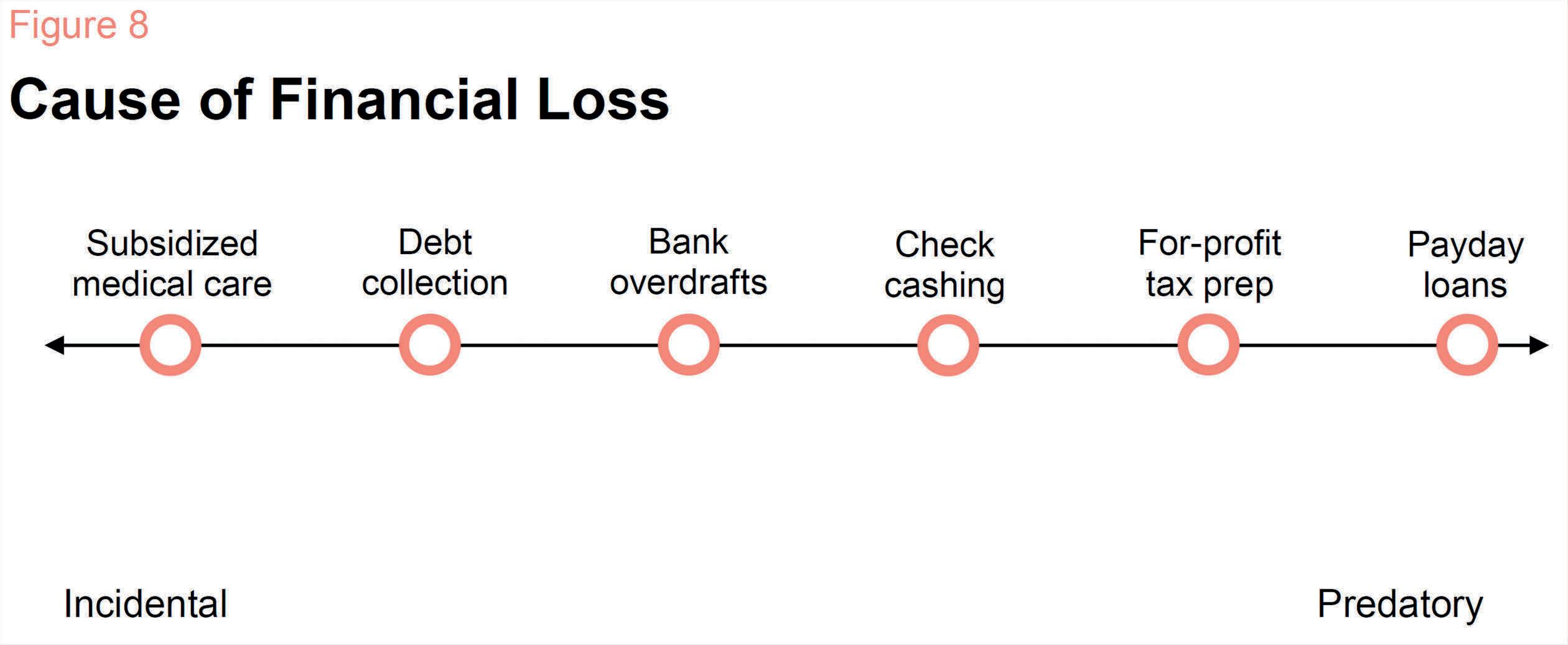
Subsidized medical Care Debt Collection Bank Overdrafts Check Cashing For Profit tax prep. Payday loans
Short-term, high-interest (payday) loans are predatory and may affect future guaranteed income programs.
Households selected to receive a guaranteed income could face risk from short-term, high-interest loans if the industry designs a product collateralized by guaranteed income payments instead of a paycheck Such loans could include payday loans and installment loans which the Federal Deposit Insurance Corporation characterizes as “unfair” and “abusive. [93]”
Short-term, high-interest loans are expensive and often trap users in a cycle of poverty Payday loans account for the largest volume of loans made by nondepository lenders in California [94]. The Consumer Financial Protection Bureau has found that most loans are made to individuals who take out at least 10 loans in a row, paying more in fees than they receive in credit Payday lending costs lowincome borrowers $3 4 billion in excess fees annually [95].
A guaranteed income could make households less likely to use predatory loan services because payday loan use declines as income rises. In Illinois, 53% of payday loan consumers earn $30 000 per year or less while only 19% earn more than
$50,000 per year [96]. Frequent guaranteed income payments can also smooth income volatility common to lowincome households making participants less likely to seek out predatory lending services to fill gaps in income Another section of this report recommends monthly disbursements partially on this basis A Center for Economic Progress study of the EITC program suggests that use of payday loans decreases with the regularity of supplemental payments (against a baseline of annual payments); quarterly EITC payments in a Chicago experiment cut payday loan use nearly in half, from 15% to 8% [97].
Predatory loans like payday loans remain a threat, especially if guaranteed income is modest in size; estimates of the median income of payday borrowers ranges from $20,000 to $50,000 [98]. It is likely that some households will still fall within that income range after receiving a guaranteed income and use those predatory services ending up caught in a cycle of loan repayment
31
Figure 8
Incidental Predatory
Master / Sub -A ccounts : Social Securit y Pa y ments to Predator y Lenders
The payday loan industry could offer a product that is collateralized by a guaranteed income payment, just as they did for Social Security payments. Section 207 of the Social Security Act is designed to protect Social Security beneficiaries by prohibiting assignment, transfer, or garnishment of Social Security benefits [99]. Yet lenders found a loophole by using master and sub-accounts.
A master account is an account established at a financial institution to receive payments on behalf of multiple people. A payday lender would open a master account with a bank. They would then open a sub-account under their master account for a borrower who wished to post Social Security payments against a loan. Then, Social Security payment would be sent to the sub-account, which is in the name of the customer, but accessible to the payday lender’s master account. This allowed the lender to effectively take the loan amount and any agreed upon fees from the benefit payment before giving the difference to the customer [100]. Although the Social Security Administration updated its internal policy in 2011 to make payments to master accounts owned by predatory lenders ineligible, this example illustrates the creativity of the industry in finding ways to profit from nonemployment income [101][102].
For-profit tax preparation targets lowincome households and may take advantage of guaranteed income
If the guaranteed income is considered taxable or delivered as a refundable tax credit households will need to file a tax return which could put them at risk of losing part of the value of the payment through fees charged by for-profit tax preparers
Many for-profit tax preparers target working poor households who file for EITC refunds A Brookings Institution analysis found that “zip codes with the highest concentrations of EITC filers have approximately 75 percent more tax preparation storefronts per filer than moderate EITC zip codes [103]." The study also found that EITC eligible workers spent an average of $400 on tax returns and EITC preparation fees at national tax preparation chains Such services could potentially claim a large portion of guaranteed income payments [104]. This financial loss could be further
exacerbated by refund anticipation loans, which are mostly used by low- and middleincome consumers Despite being a “nofee” loan, some tax preparers may be charging other unrelated fees to cover the costs of offering the loans [105].
Even if guaranteed income payments are made tax exempt, as recommended previously, households will likely continue using tax preparation services, but there is little chance that for-profit tax companies would be able to capture a portion of the guaranteed income payments
If payments are taxable or delivered as refundable tax credits, tax preparation fees may take a portion of guaranteed income This is especially likely if households, in order to receive payment are induced to file taxes when they would not have otherwise If guaranteed income payments were delivered outside the tax code but considered taxable, households might still be induced to file if payments are contingent on tax compliance.
32
Check cashing fees somewhat target low-income households and may impact future guaranteed income if paper checks are an option
A portion of the guaranteed income could be lost to check cashing fees if payments are delivered by paper check rather than direct deposit or prepaid debit cards
Check-cashers offer the same check cashing service of a traditional bank but with a sizeable (1-4%) transaction fee [106].
Check cashing fees affect both the unbanked and underbanked (who may not have bank accounts that allow check services or direct deposits). Underserved consumers spent about $2 billion on check cashing fees in 2015 [107].
As recommended previously, physical checks should be avoided because they are the most restrictive disbursement mechanism If a program offers payments by paper checks, they should be aware that these costs could erode the net household gain from guaranteed income
Bank overdraft fees do not directly target low-income households but may erode guaranteed income if payments are direct-deposited
Bank overdraft fees could absorb a portion of guaranteed income payments if recipients struggle to monitor and manage the cash flow Bank overdrafting when used intentionally, is a form of highinterest, short-term credit; if use is unintentional, it is a costly penalty that banks impose on customers instead of denying transactions
Overdraft fees do not necessarily target low-income households but often affect them According to the Consumer Financial Protection Bureau, banks and other financial institutions receive about $17 billion annually from overdraft and nonsufficient funds fees [108]. Eighteen percent of account holders pay 91% of overdraft and non-sufficient funds fees and frequent overdrafters have lower credit scores, lower daily balances, and are more financially vulnerable than
non-overdrafters [108].
The likelihood of losing part of a guaranteed income to overdraft fees depends on the payment mechanism If distributed through direct deposit, households could be vulnerable to overdraft fees especially if the payment increases financial activity associated with the account If the guaranteed income is modest in size, it is likely that many households will continue or begin to encounter these types of fees Though one might expect banked households to be less susceptible to overdraft fees as income rises due to a guaranteed income, a Pew study found that more than 33% of frequent over drafters earn between $25,000 and $50,000 [109]. Prepaid cards do not generally carry overdraft fees, but do carry a wide range of other fees discussed in the "disbursing payments" section of the repot
Financial obligations tied to income affect low-income households and may grow larger because of guaranteed income
Guaranteed income payments can be partially lost when debts or service costs are tied to household income (meaning that when income increases, so does the amount the household must pay). These financial losses are incidental, meaning they are not due to predatory targeting but rather arise as costs mechanically adjust to income changes
Low- and moderate-income households already face, on average, an effective marginal tax rate of 31.3% after taxes and the type of benefits phase outs discussed previously [110]. A household which receives an additional dollar of income but faces an effective marginal tax rate of 31% will lose 31 cents of the new income and net only 69 cents
A true measure of a household’ s effective marginal tax rate would also include reductions (or increases) in third-party benefits (or debts) which are formally or informally linked to household income
33
Examples of such benefits and debts include services or obligations that can be reduced based on need, can be repaid over a negotiable time period, or are made on a “ pay what you can” basis
Debt collectors and private utilities are generally willing to reduce obligations based on financial hardship, measured as household income They do so as a means of increasing recovery; partial recovery is preferable to full default These programs are not predatory, as they do not target or exploit low income individuals but they will not voluntarily overlook or exclude guaranteed income payments when considering a household s ability to repay debt

Other services link service fees to income for altruistic reasons; these services like debt collectors may increase households’ post-guaranteed-payment obligations Most large hospitals, many private medical providers, and some dental and vision services subsidize low-income
patients based on income Public service costs, including municipal fines and other legal based on the payer s income
Low-income households are especially likely to face higher effective marginal tax rates as a result of income-based services or financial obligations One in 3 US households have debt that is in collection [111], more than 1 in 20 receives heating assistance, [112] and statistics show that low-income household spending on healthcare is well below the value of services provided indicating the presence of widespread subsidies [113][114].
Figure 9 illustrates how these incidental financial losses can accumulate and affect low-income households receiving a guaranteed income The graph shows a spending profile for a hypothetical household with $20 000 in annual earned income and a representative set of public benefits The household begins receiving a $500/month guaranteed income, but also faces a set of financial obligations, such as
34
Figure 9
medical debt and utility payments that are tied to household income Despite a nominal rise in income of $6,000, the household nets only $1,943 because the household faces a total effective marginal tax rate of 67 6%. More than half of the payment is lost to taxes expanded debt or is offset by lost public and private benefits
Practices to Mitigate Financial Loss
Guaranteed income programs can mitigate the largest risks described above by warning guaranteed income program participants about bank overdraft fees and protecting payments from payday lenders and garnishment through law These two measures, along with the “hold harmless policy” for public benefits recommended previously, should take priority
Other potential mitigation strategies are not recommended here because they mitigate financial loss that is unlikely to occur during a guaranteed income program, are not scalable, or are not sufficiently effective. These include regulating predatory lending providing financial education establishing lending circles or making payments in-kind
Information about fees and opt-outs could be shared through the program enrollment processes, such as through paperwork in the program registration process or inperson during one-on-one benefit consultations, if they are offered This is a scalable solution that could help households prevent unexpected overdraft fees
Create legislation that protects guaranteed income from predatory lenders and garnishment
If a guaranteed income program is passed through legislation the statute should protect households from high-interest, short-term loans and garnishment orders For predatory lenders, language should specify that the right of any person to future guaranteed income payments cannot be “transferable or assignable” and cannot be sent to master-sub accounts managed by payday lenders except in special cases (like nursing homes or for members of religious groups). This will ensure that households receive the full amount and retain discretion over its use.
If guaranteed income programs offer direct deposit banked households should be informed or reminded about potential overdraft fees and encouraged to opt-out if they do not wish to incur fees but are currently enrolled Since 2010, the Consumer Financial Protection Bureau has required that bank customers must opt-in to overdraft fees for ATM and debit card transactions; otherwise banks must decline the purchase [115]. However, a survey from the Center for Responsible Lending found that 60% of people who opted-in to overdrafts said they did so to avoid an overdraft fee This suggests that customers are often misinformed about potential overdraft fees and that the majority of those who have opted-in to overdraft protection would prefer to opt-out [116].
This mimics language used to protect Social Security payments from being assigned or transferred to anyone other than the intended beneficiary and closes the master-sub account relationship loophole that payday lenders previously exploited
To further mitigate the effects of garnishments, the legislation should also include language that forces financial institutions to protect two months’ worth of benefits before authorizing a court ordered garnishment This mimics the updated 2013 regulation to mitigate the pernicious effects of court ordered garnishment orders against Social Security, Supplemental Security Income, Federal Railroad retirement, Civil Service Retirement System Federal Employees Retirement System and Veterans Affairs benefits [117].
35
Inform account holders about bank overdraft fee policies
Other Options
1. If guaranteed income is distributed through paper checks offer access to second-chance banks to avoid check cashing fees and expand options
Second-chance banks offer an opportunity to eliminate the need for unbanked households to use check-cashing services and money orders Second-chance banks are alternatives to traditional banking services for those flagged by ChexSystems, a service banks use to screen out risky account applicants According to ChexSystems about 15% of bank account applicants are denied traditional bank accounts and are offered a “second chance account instead
Second-chance bank options should minimize the additional fees and restrictions for new bank account holders While some second-chance accounts are costly, others, like those offered by Chime and Motiv, cater to the needs of the previously unbanked and act as a stepping stone to a traditional banking experience. These new services appear to be financially sustainable while avoiding fees like overdraft charges Chime has continued to grow since 2014 and appears to be a scalable solution; it is currently valued at over $500 million, has opened over 1 million bank accounts, and has processed more than $4 5 billion in transactions [118] [119]. The benefits of these high-road bank options are explained in more detail in the disbursing payments section of this report
Appropriations Committee in California due to resistance from the payday loan industry [122]. The bill would have restricted installment loans totaling more than $2,500 [123].
Future programs should not prioritize financial literacy and education training Though such activities might, in theory, improve savings habits, the evidence on their effectiveness in a U S context is mixed at best Research does suggest that people with lower levels of financial literacy are more likely to take payday loans and less likely to open checking or savings accounts [124]. Financial training was also supported by some members of a small community meeting in Stockton [125], and offering financial training would not encounter the same political barriers as, say, a change in payday loan regulation Nevertheless, the dearth of effective financial literacy programs would make it hard to justify such a large expense
Participation in savings circles, sometimes called lending circles, may also mitigate predatory and incidental losses Savings circles require participants to make small, regular payments in exchange for receiving a large lump sum payment once per cycle
A complementary policy to mitigate payday loans is worth supporting – one approach would be to pursue capping the annual percentage rate (APR) for loans in California at 36%, as recommended by the Center for Responsible Lending [120]. Illinois already caps payday lending at 36% APR [121]. But this is a very politicized solution and has already encountered resistance from special interest groups in many states In 2017 such a bill, AB 784, failed to emerge from the Assembly
Savings groups are a prominent antipoverty tool in developing regions, and some organizations, like ASSETS PA [126] and the Mission Asset Fund [127], have successfully adopted the model in the US, though usually within an existing affinitygroup
Because the loans are interest free, savings circles have the potential to undercut predatory forms of credit by providing a cheaper form of liquidity They can also supersede other debts because they are a formal obligation like any other bill and may allow a household to receive and spend the lump-sum before other claims against the household s income can be exercised
36
2 Capping predatory lending rates would be prohibitively challenging
3 Evidence for financial training effectiveness in the U S is mixed
4. Saving circles can encourage saving but may not be scalable at a city or state level
While this may work on a small scale it is unlikely that saving circles could scale easily to an entire city or state A study that replicated Mission Asset Fund s practices with five neighboring community-based organizations from 20112013 stresses how Mission Asset Fund’ s ongoing support and expertise to handle loan-processing issues was critical to success [128]. While Mission Asset Fund may be able to dedicate time to supporting five nonprofits managing 267 clients in a research project, it seems unlikely that it could scale to support ongoing coverage of an entire city or state
37



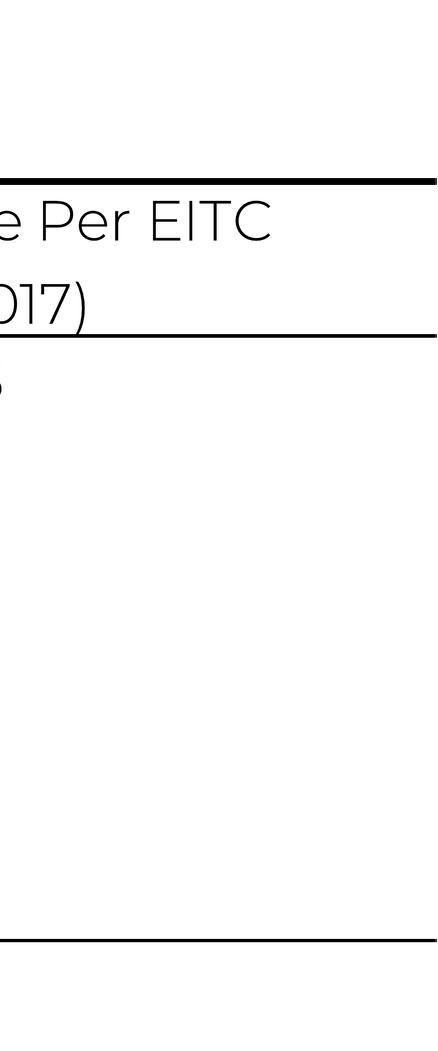


































 1.
2.
Figure 10
1.
2.
Figure 10
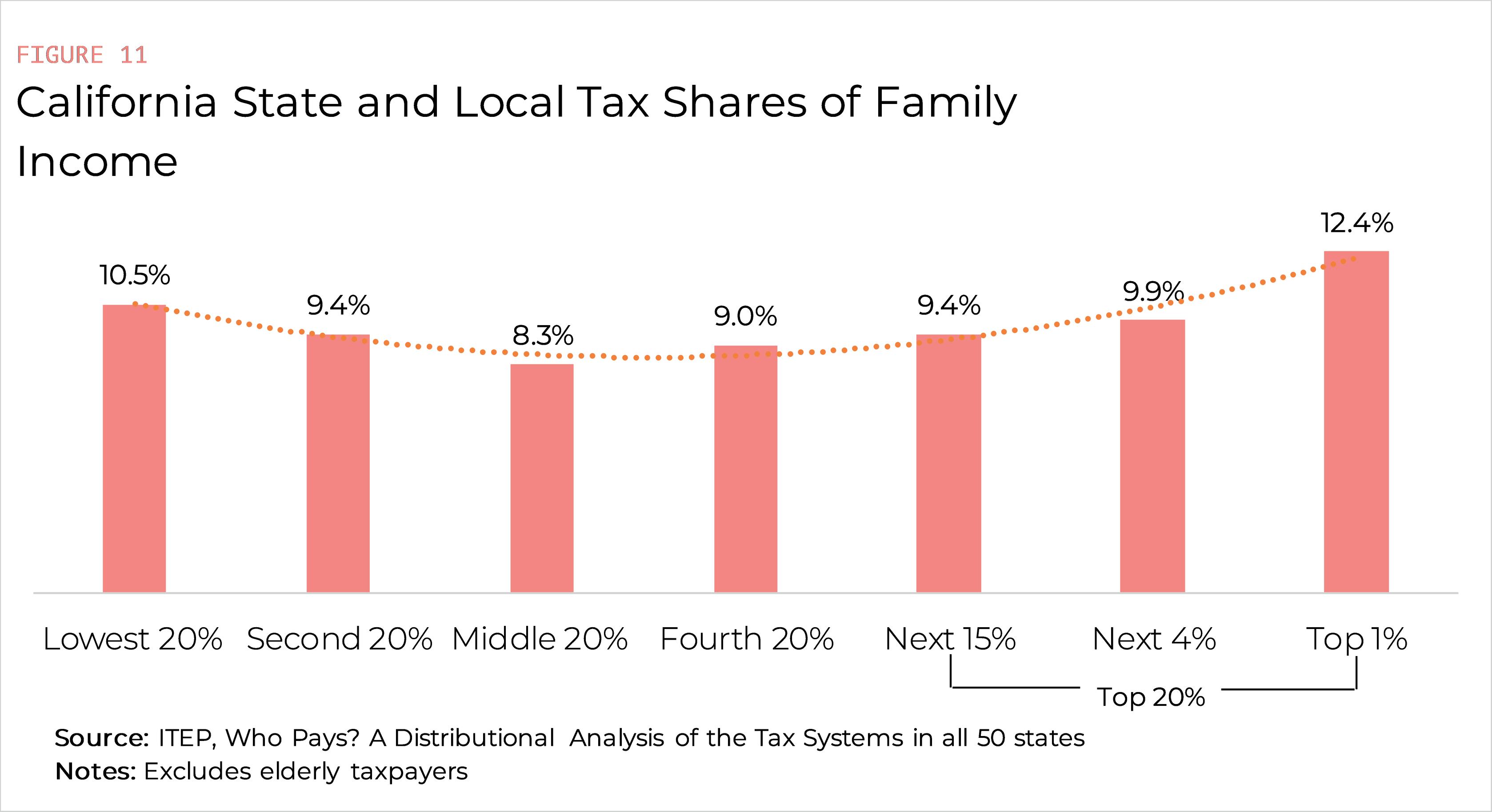
California
1.
2.
Illinois
3.
Figure 11






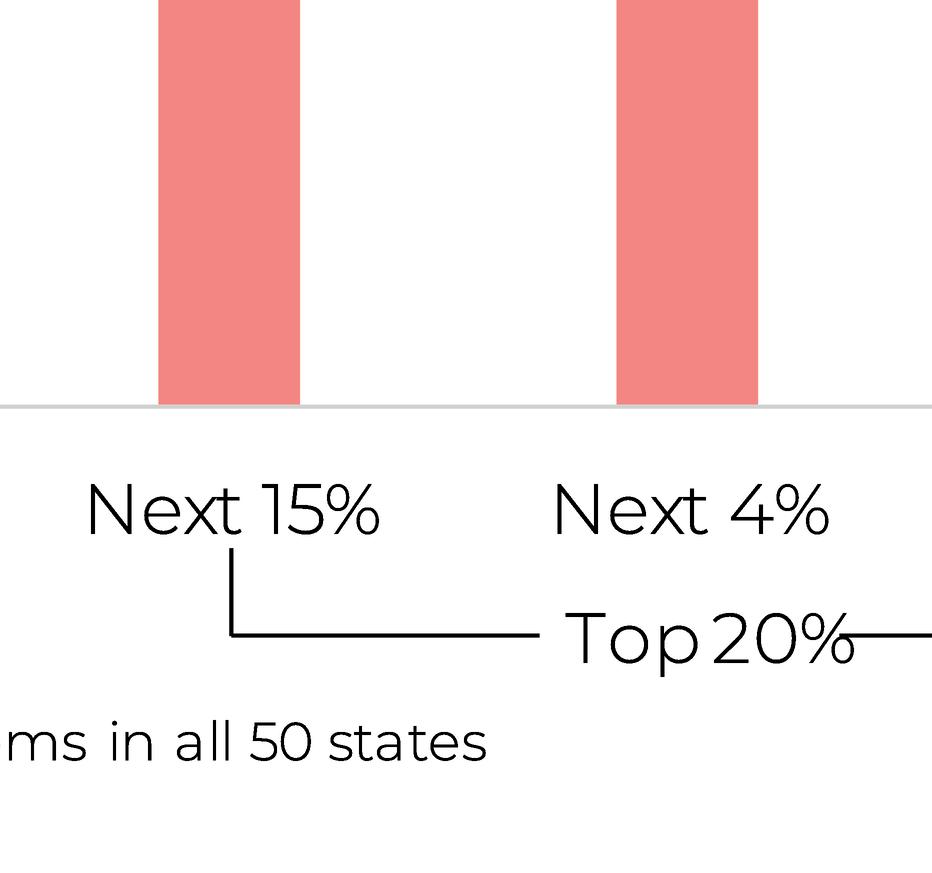
12
Figure

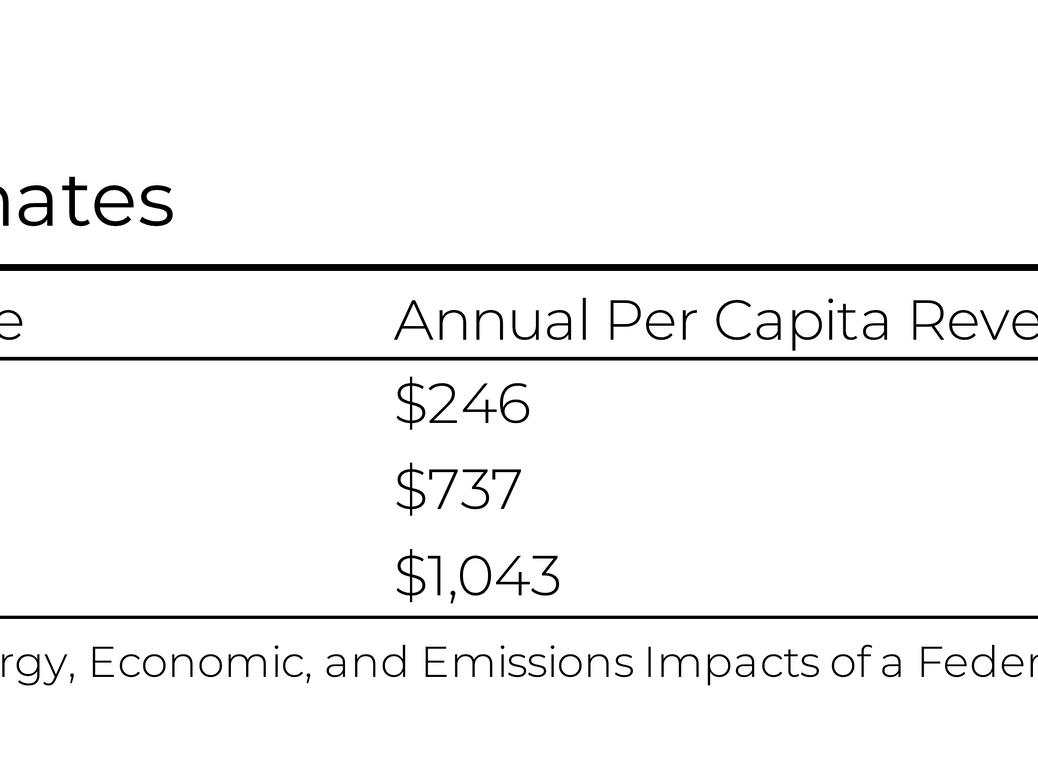
 Figure 13
Figure 13
1. 2. 3. 4. 5. 6. 7. 8.




















































 Figure 13
Figure 13